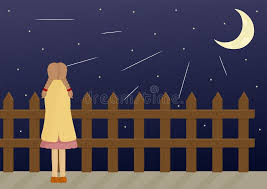Before the rise of luxury clubs and high-rise bars, Manila’s nightlife thrived in small, soulful spaces.
In the 1980s and 1990s, areas like Ermita and Malate were the beating heart of 마닐라 밤문화 (Manila Nightlife).
People gathered in piano bars, discos, and live music cafés to unwind after long days.
It was a time when the city’s charm lay in its simplicity — clinking glasses, heartfelt songs, and laughter that echoed into the early hours.
Even today, some of those classic venues survive, keeping the spirit of old Manila alive through music and nostalgia.
The 2000s: A New Generation of Energy
As Manila modernized, so did its nightlife.
The early 2000s brought a new wave of bars, clubs, and events that attracted younger crowds and international visitors.
Makati Avenue became a hub for stylish lounges, while Ortigas introduced themed pubs and live entertainment venues.
It was during this period that the Manila Nightlife (마닐라 밤문화) began blending Western trends with Filipino creativity — setting the stage for its next evolution.
Poblacion’s Rise: The Bohemian Revolution
Then came Poblacion, a once-sleepy neighborhood that transformed into Manila’s cultural and nightlife center.
Here, creativity reigns supreme.
Cocktail bars like Run Rabbit Run and Polilya broke the mold with unique drinks and artistic interiors.
Rooftop hostels, underground gigs, and art-themed events turned the district into a living, breathing symbol of Manila’s youthful energy.
Poblacion became the soul of 마닐라 밤문화, proving that authenticity and creativity could outshine even the glitziest clubs.
The Rise of BGC: Luxury and Lifestyle
At the same time, Bonifacio Global City (BGC) emerged as the modern face of Manila’s nightlife.
This sleek, organized district introduced a new level of sophistication — think high-end clubs, international DJs, and rooftop bars with five-star service.
Places like The Island, XYLO, and Bank Bar redefined the Manila Nightlife (마닐라 밤문화) experience, appealing to professionals, expats, and travelers seeking elegance and exclusivity.
BGC showed the world that Manila could compete with global nightlife hubs — while still maintaining its Filipino warmth and flair.
Technology and the Modern Experience
Today, the nightlife in Manila is smarter and more connected than ever.
Social media, event apps, and digital payment systems have changed the way people discover and enjoy nightlife.
Bars now promote themed nights, pop-up art shows, and live DJ sets online — creating a sense of community that extends beyond physical spaces.
Even small venues in Quezon City or Taguig use digital innovation to reach new audiences and keep the 마닐라 밤문화 evolving.
A Blend of Old and New
What makes Manila special is how it honors its past while embracing the future.
Classic dive bars coexist with futuristic cocktail lounges.
Old-school love songs play just streets away from cutting-edge EDM beats.
This balance keeps the Manila Nightlife (마닐라 밤문화) authentic — a reflection of Filipino adaptability and creativity.
Final Thoughts
The story of 마닐라 밤문화 is one of transformation, resilience, and pride.
From retro bars filled with nostalgia to rooftop lounges that touch the clouds, the city continues to redefine what nights can be.
Manila’s nightlife isn’t just about places — it’s about people, passion, and progress.
And as the city grows, so too will its nights — brighter, bolder, and more unforgettable than ever.


